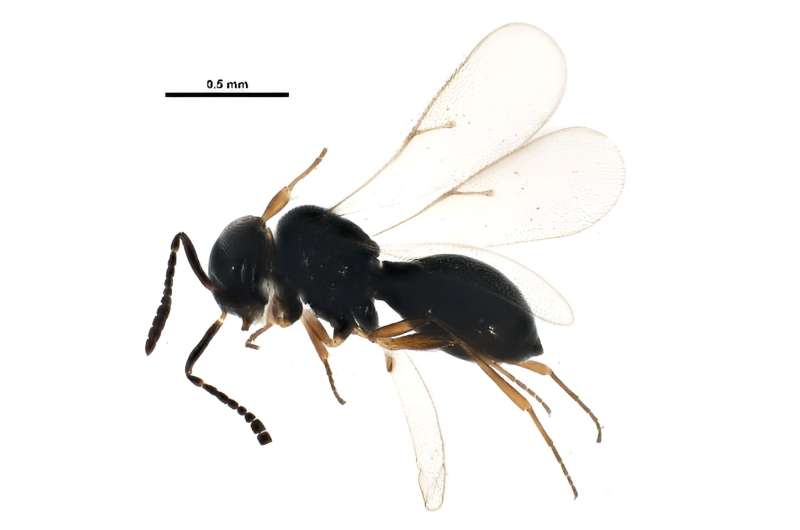Females of T. podisi, shown in the photo, have a crucial role in disrupting the development of the brown stink bug, Euschistus heros, a destructive soybean pest in Brazil. This pest is highly resistant to chemical insecticides, making biological control essential. Telenomus podisi, a parasitoid microwasp identified by American entomologist William Harris Ashmead in 1893, is the proposed solution.
Parasitoids like T. podisi are beneficial insects that lay their eggs on or within other insects, eventually leading to the host’s demise. This method is effective in controlling pests without harming the environment.
A recent study by researchers from São Paulo State University (UNESP) in Brazil and Oklahoma State University (OSU) in the United States has determined the optimal dispersal range for T. podisi. This information is crucial for enhancing the release of these egg parasitoids to effectively control E. heros, which also infests cotton, sunflower, and pasture crops.
The strategy involves T. podisi females locating E. heros eggs on plants and depositing their own eggs there. This interrupts the stink bug’s life cycle, leading to the emergence of parasitic wasps instead of destructive bugs. Professor Regiane Cristina de Oliveira, the article’s last author and a faculty member at FCA-UNESP, has been leading studies to advise farmers on the best practices for implementing this biological control system.
For more information, you can read the full article on phys.org.
